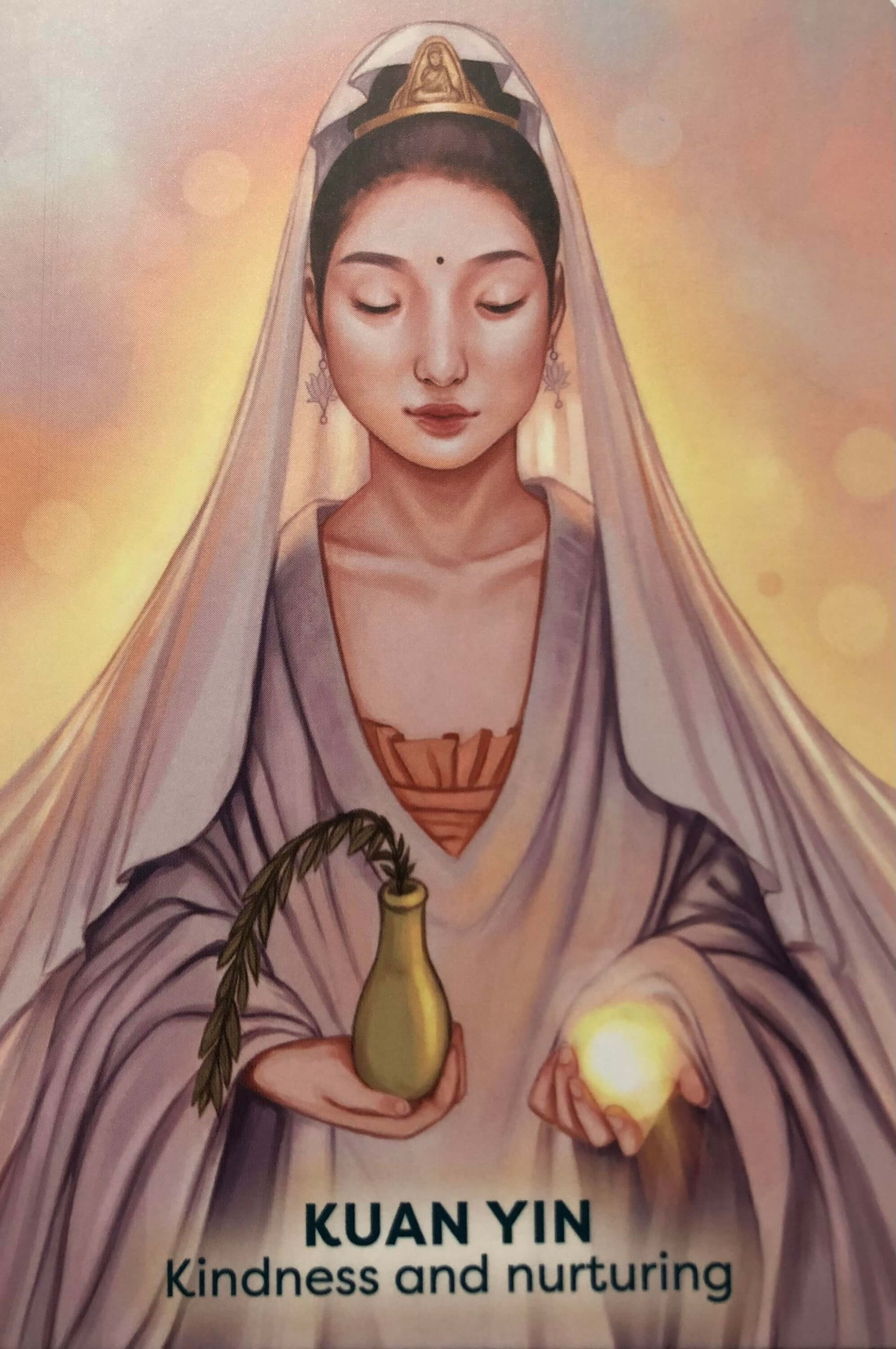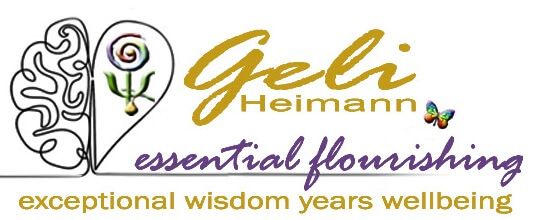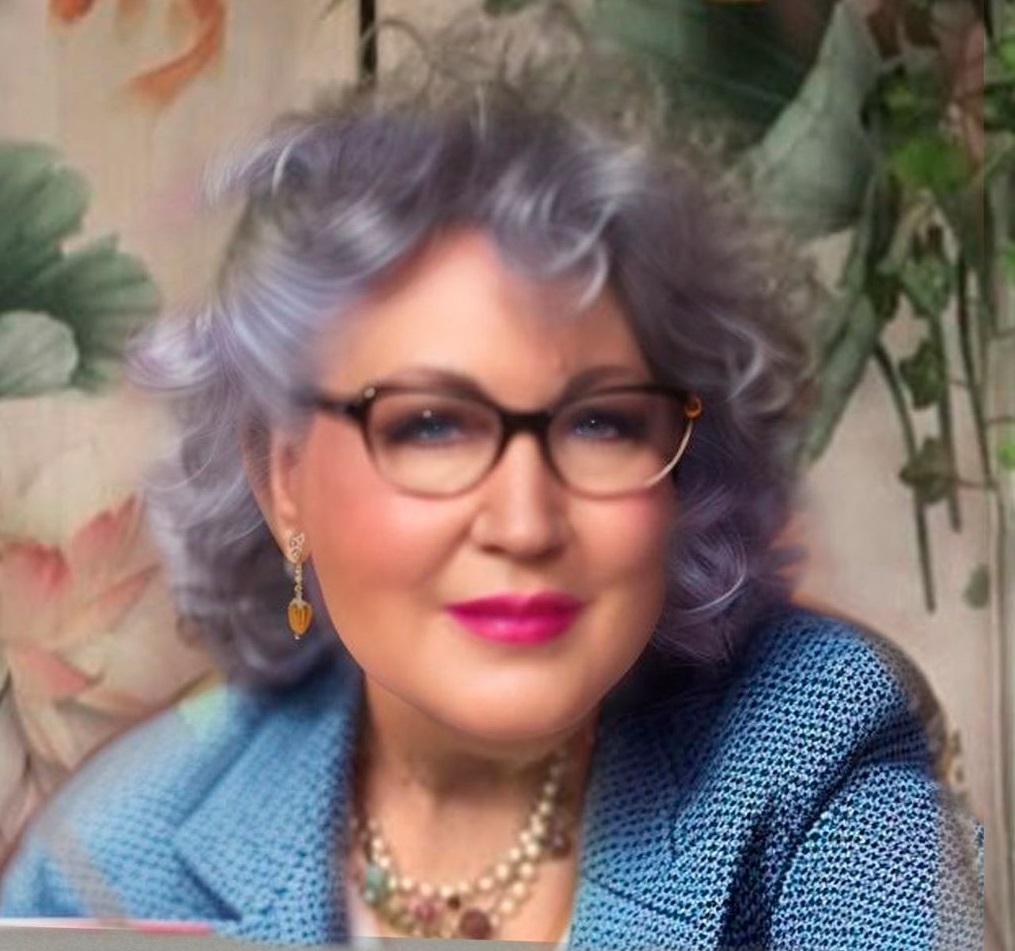
(Artwork by Hillary Wilson)
On this website and my other work I predominantly refer to the Archetype of Kuan Yin.
Why Archetypes?
Archetypes can play a powerful role in emotional healing by providing a framework for understanding and working through deep-seated emotional patterns and experiences.
Here are some of the purposes and benefits of using archetypes in emotional healing:
1. **Understanding the Self:** Archetypes represent universal patterns of human behaviour and experience. By identifying and working with archetypes, individuals can gain insight into their own motivations, fears, desires, and strengths. This self-awareness is a crucial first step in emotional healing.
2. **Symbolic Language:** Archetypes operate through symbolic language, which can bypass the rational mind and speak directly to the subconscious. This can be particularly helpful in accessing and processing emotions that may be difficult to articulate or understand consciously.
3. **Integration:** Working with archetypes can help individuals integrate different aspects of themselves, including both light and shadow qualities. This process of integration can lead to greater self-acceptance, wholeness, and inner harmony.
4. **Healing Trauma:** Archetypes can serve as powerful allies in healing trauma. By working with archetypal energies, individuals can reframe their experiences, gain new perspectives, and begin to release and transform deeply held emotional wounds.
5. **Empowerment:** Archetypes can also be sources of strength, guidance, and empowerment. By connecting with archetypal energies such as the Warrior, the Healer, or the Wise Elder, individuals can access inner resources and qualities that can support them in their healing journey.
6. **Creative Expression:** Archetypes can inspire creative expression through art, writing, movement, or other forms of self-expression. This creative process can be deeply healing and transformative, allowing individuals to explore and release emotions in a safe and supportive way.
Overall, working with archetypes in emotional healing can be a profound and transformative process, offering individuals a deeper understanding of themselves, a pathway to healing and growth, and a connection to universal energies and wisdom.
Kuan Yin, is often used as an archetype for healing women with regard to patriarchal oppression and wounds due to her qualities of compassion, empathy, and unconditional love.
Here's why and how Kuan Yin is invoked in this context:
1. **Compassion and Healing:** Kuan Yin is known for her boundless compassion and healing energy. By connecting with her archetype, women can access a source of deep emotional healing and nurturing. This can be particularly beneficial for those who have experienced trauma or oppression as a result of patriarchal systems.
In Tao Tantric healing, invoking Kuan Yin's energy can help women connect with their own capacity for self-compassion and self-healing
2. **Empathy and Understanding:** Kuan Yin's archetype embodies empathy and understanding for the suffering of all beings. By invoking her energy, women can cultivate a sense of empathy for themselves and others, helping to heal wounds of shame, guilt, and self-blame that may have been internalized due to patriarchal conditioning.
3. **Transcending Dualities:** Kuan Yin represents the transcendence of dualities such as masculine/feminine, light/dark, and strength/vulnerability. By embodying her archetype, women can embrace their own complexity and wholeness, moving beyond limiting beliefs and societal expectations imposed by patriarchal structures.
4. **Standing in Solidarity:** Kuan Yin's archetype can also serve as a symbol of solidarity and sisterhood among women. By invoking her energy collectively, women can support each other in healing from patriarchal wounds, fostering a sense of unity, empowerment, and mutual support.
5. **Activating Inner Strength:** While Kuan Yin is often associated with qualities of gentleness and compassion, she also embodies inner strength and resilience. By connecting with her archetype, women can access their own inner reservoirs of strength and courage, enabling them to confront and transform patriarchal oppression and wounds.
6. **Feminine Wisdom:** Kuan Yin represents the divine feminine and the wisdom that comes from embracing one's feminine essence. In Tao Tantric healing, women are encouraged to tap into their own feminine energy, intuition, and creativity, aligning with the nurturing and compassionate qualities embodied by Kuan Yin.
7. **Emotional Healing:** Kuan Yin's archetype is often associated with emotional healing and the release of past traumas and wounds. In Tao Tantric healing, women are guided to explore and heal emotional blockages, allowing for greater emotional freedom, self-expression, and empowerment.
8. **Sacred Sensuality:** Kuan Yin's energy can also be invoked to honor the sacredness of sensuality and the body. In Tao Tantric healing, women are encouraged to embrace their bodies as sacred vessels of divine energy, connecting with their sensuality in a way that is healing, empowering, and honoring of their feminine essence.
9. **Unity and Oneness:** Kuan Yin's archetype embodies the principle of unity and oneness, recognizing the interconnectedness of all beings. In Tao Tantric healing, women are guided to cultivate a sense of unity with themselves, their bodies, and the world around them, fostering a deep sense of wholeness and integration.
Overall, invoking Kuan Yin as an archetype for healing women in the context of patriarchal oppression can provide a powerful and transformative pathway to healing, empowerment, and liberation from the constraints of oppressive systems.
By invoking Kuan Yin's archetype in Tao Tantric healing for women and their bodies, practitioners can access a powerful source of compassion, healing, and feminine wisdom, supporting women in their journey towards emotional, physical, and spiritual well-being.
♥
The story and legend of Kuan Yin, also known as Guanyin or Quan Yin, are deeply rooted in Chinese and Buddhist mythology.
Here is a brief overview of the story of Kuan Yin:
Kuan Yin is a bodhisattva, a being who has attained enlightenment but chooses to remain in the world to help others achieve liberation. She is known as the Goddess/Archetype of Mercy and Compassion, revered for her infinite love and kindness towards all beings.
The legend of Kuan Yin has many variations, but one of the most popular stories is as follows:
Kuan Yin was originally a princess named Miao Shan. Despite her tyrannical father's wishes for her to live a powerful and wealthy life in the hierarchy of his kingdom, she chose a life of spiritual devotion and service to others. This angered her father, who subjected her to various trials and hardships in an attempt to force her to abandon her path. However, Miao Shan remained steadfast in her commitment to compassion and forgiveness.
Eventually, her father ordered her execution, but as she knelt to accept her fate, a miraculous event occurred. The executioner's sword shattered into a thousand pieces, and a lotus flower emerged from the ground, carrying Miao Shan to safety. She then transformed into Kuan Yin, the Goddess of Mercy, and vowed to help all beings attain liberation from suffering and find peace and happiness.
Kuan Yin is often depicted as a serene figure, dressed in white robes and holding a vase of pure water or a willow branch. She is associated with qualities of compassion, healing, and protection. Her name Kuan Yin means "she hears the cries of the world and responds with infinite love and mercy". Her legend continues to inspire countless people around the world to cultivate compassion, kindness, and empathy in their own lives.














